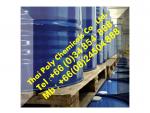แคลเซียมคาร์บอเนต Calcium Carbonate |
฿1 |
|
ชื่อผู้ประกาศ : อัศวิน เบอร์โทรศัพท์ : 034854888 โทรศัพท์มือถือ : 0800160016 ที่อยู่ : 36/5 ม.9 ต.นาดี อ.เมืองสมุทรสาคร ร้าน TPCC |
แคลเซียมคาร์บอเนต Calcium Carbonate CaCO3 ขนาดบรรจุภัณฑ์มาตรฐาน 25 kg bag
แคลเซียมคาร์บอเนต, Calcium Carbonate, CaCO3, GCC, PCC
แคลเซียมคาร์บอเนต (อังกฤษ: Calcium carbonate) เป็นสารประกอบมีสูตรเคมีคือ
CaCO3 แคลเซียมคาร์บอเนต ไม่ละลายในน้ำ
แต่สามารถทำปฏิกิริยากับน้ำและ คาร์บอนไดออกไซด์แล้วกลายเป็นแคลเซียมไบคาร์บอเนต
แคลเซียมคาร์บอเนต
Calcium Carbonateสูตรทางเคมีของแคลเซียมคาร์บอเนตคือ
CaCO3 มีคุณสมบัติเฉพาะที่ไม่เป็นพิษ มีความขาว (Whiteness) และความสว่าง (Brightness) สูงจึงนำไปใช้ประโยชน์ได้หลากหลายเช่น ใช้เป็นตัวเติมเต็ม (Filter) และตัวเพิ่มปริมาณ (Extender)ใน อุสาหกรรมกระดาษ สีพลาสติก พีวีซี และยาง เช่นยางในและยางนอกรถยนต์รองเท้าสายพานลำเลียงขนถ่ายสินค้า เป็นต้นใช้เป็นส่วนผสมในยาสีฟัน ผงซักฟอก
ยาและเวชภัณฑ์ต่างๆนอกจากนี้ยังใช้ในการผลิตชิ้นส่วนและอุปกรณ์ต่างๆ เช่น
โทรศัพท์สายหุ้มโทรศัพท์ฉนวนหุ้มสายไฟ ปากกา ยางลบ ถุงมือ และแว่นตา เป็นต้นกรรมวิธีการผลิตแคลเซียมคาร์บอเนต
การผลิตแคลเซียมคาร์บอเนตมี2วิธีคือ
1.แคลเซียมคาร์บอเนตชนิดบดจากธรรมชาติ(Ground Calcium
Carbonate : GCC)เป็นการนำแคลเซียมคาร์บอเนตจากธรรมชาติมาบดเช่นหินปูน (Limestone)ที่มีความขาวและความบริสุทธิ์สูง หินอ่อน(Marble) ที่เกิดจากหินปูนแปรสภาพด้วยความร้อนและความดันทำให้ตกผลึกใหม่ชอล์ก (Chalk) ซึ่งเป็นหินปูนเนื้อร่วนละเอียดและแร่แคลไซต์(Calcite) เป็นต้น การลดขนาดแร่(Size Reduction) และการคัดขนาด (Classification) ถือเป็นขั้นตอนสำคัญของการแต่งแร่ในการผลิตแคลเซียมคาร์บอเนตเพื่อให้ได้ผลิตภัณฑ์ที่มีขนาดอนุภาคต่างๆตามที่ตลาดต้องการผลิตภัณฑ์แคลเซียมคาร์บอเนตชนิดบดจากธรรมชาติ(GCC) แบ่งประเภทได้ดังนี้
1.1ผลิตภัณฑ์แบบ
Dry Product เป็นผลิตภัณฑ์ที่ได้จากการบดแคลเซียมคาร์บอเนตจากธรรมชาติโดยตรงมีลักษณะเป็นผงสีขาวขนาด1-147 ไมครอนใช้ในอุตสาหกรรมกระดาษ สี พลาสติก ยาสีฟัน ผงซักฟอก รวมทั้งการผลิตปุ๋ยและอาหารสัตว์
1.2 ผลิตภัณฑ์แบบ Coated Product เป็นผลิตภัณฑ์ที่ได้จากการนำผลิตภัณฑ์แบบ
DryProduct ขนาดอนุภาค1-15
ไมครอนมาเคลือบผิวอนุภาคเพื่อปรับปรุงคุณสมบัติบางอย่างให้ดีขึ้น เช่นผิวอนุภาคเปียกได้ง่ายขึ้นอนุภาคแพร่กระจายดีขึ้นดูดซึมน้ำมันลดลงนิยมใช้ในอุตสาหกรรมพลาสติก
1.3ผลิตภัณฑ์แบบ
Calcium Carbonate Compound เป็นผลิตภัณฑ์ที่ผสมกันอยู่ในรูปของแข็งระหว่างอนุภาคแคลเซียมคาร์บอเนตบดจากธรรมชาติ(GCC)ขนาด 20-45ไมครอน ร้อยละ75-80กับเม็ดพลาสติกร้อยละ20-25ผลิตภัณฑ์มีลักษณะทรงกลมขนาดประมาณ2-3มิลลิเมตรใช้ในอุตสาหกรรมพลาสติกขึ้นรูปต่างๆ
เช่น ถุงปุ๋ยกระสอบพลาสติกถุงพลาสติกใส่ของฉนวนหุ้มสายไฟ ภาชนะ และท่อต่างๆ1.4ผลิตภัณฑ์แบบ
Slurry Product เป็นผลิตภัณฑ์ที่ได้จากการนำผลิตภัณฑ์แบบ DryProduct ขนาดอนุภาค1-20 ไมครอนเข้าสู่กระบวนการลอยแร่ (Floation)เพื่อแยกมลทินต่างๆออกไป ได้แก่ซิลิกาและเหล็กอ๊อกไซต์ทำให้สัดส่วนแคลเซียมคาร์บอเนตเพิ่มขึ้นหลังจากนั้นจึงนำไปบดแบบเปียกเพื่อประหยัดพลังงานซึ่งสามารถบดได้ละเอียดถึง 0.3ไมครอนและได้ผลิตภัณฑ์ในรูป Slurry นิยมใช้ในอุตสาหกรรมกระดาษ2.แคลเซียมคาร์บอเนตชนิดตกผลึก (Precipitated
Calcium Carbonate : PCC) เป็นการนำแคลเซียมคาร์บอเนตบดจากธรรมชาติ(GCC)มาทำการตกผลึกใหม่ให้ได้แคลเซียมคาร์บอเนตบริสุทธิ์ที่มีคุณภาพสูงมีลักษณะเป็นผงขนาดเล็กขนาด
0.3-1ไมครอนที่เกิดจากการตกผลึกรูปร่างของผลึกอาจแตกต่างกันตามวิธีการผลิตแต่ส่วนใหญ่จะเป็นรูปเข็มหรือ
Rhomboidsผงแคลเซียมคาร์บอเนตมีสีขาวไม่มีกลิ่น ไม่มีรส
เสถียรในอากาศและไม่ละลายน้ำนิยมใช้ในอุตสาหกรรมกระดาษเป็นส่วนใหญ่
แคลเซียมคาร์บอเนต
มีการนำไปใช้อย่างแพร่หลายในอุตสาหกรรมหลาย ๆ ประเภท เนื่องจากมีคุณสมบัติที่บดให้ละเอียดได้ง่าย
โดยผลละเอียดของแคลเซียมคาร์บอเนต มีความเสถียรทางเคมีและไม่เป็นพิษ
นอกจากนี้คุณสมบัติพิเศษอื่น ๆ เช่น ความขาว (brightness) การดูดซับน้ำมัน (Oil absorption) ที่เอื้อประโยชน์ต่ออุตสาหกรรมบางประเภท เช่น อุตสาหกรรมกระดาษ อุตสาหกรรมพลาสติกและยาง อุตสาหกรรมสี เป็นต้นการนำแคลเซียมคาร์บอเนตไปใช้ประโยชน์ในอุตสาหกรรมต่าง ๆ ได้แก่
กระดาษอาร์ตมันและด้านการะดาษที่ใช้ในสำนักงาน กระดาษถ่ายเอกสาร กระดาษโรเนียว
กระดาษสื่อสิ่งพิมพ์ทุกชนิด รวมทั้งกระดาษกล่องบรรจุภัณฑ์ชนิดต่าง ๆ- อุตสาหกรรมสี สำหรับสีอุตสาหกรรม สีที่ใช้ในงานก่อสร้างอาคารและสีที่ใช้ในงานตกแต่ง
- อุตสาหกรรมพลาสติก เช่น หนังเทียม พลาสติกหุ้มสายไฟและสายโทรศัพท์
ท่อพีวีซี พีอีและพีบี ประตูพีวีซี เม็ดพลาสติก พลาสติกวิศวกรรมในรถยนต์ จานปิดดุมล้อรถยนต์
จานไมโครเวบและภาชนะใส่อาหาร รวมทั้งแผ่นฟิลม์พลาสติกที่ใช้ในทางการแพทย์ เช่น
ผ้าอ้อมสำเร็จรูป ผู้อนามัย- อุตสาหกรรมยาง เช่น ยางในและยางนอกรถยนต์ และรถจักรยานยนต์ รองเท้า รวมทั้งสายพานสำหรับลำเลียงขนถ่ายสินค้า
- อุตสาหกรรมอื่น ๆ เช่น อาหารสัตว์ ปุ๋ย ยาสีฟัน ผงซักฟอก ปรับปรุงคุณภาพของดินและบำบัดน้ำ
1 การใช้แคลเซียมคาร์บอเนต ในอุตสาหกรรมกระดาษ
กระดาษประกอบด้วย โครงร่างตาข่ายของเนื้อเยื่อไม้ Cellulose และรูขนาดเล็ก ซึ่งเป็นคุณสมบัติพื้นฐานของกระดาษที่ส่งผลต่อคุณสมบัติความทึบแสงและ
คุณสมบัติด้านการพิมพ์ ความทึบแสงของกระดาษเกิดจากการกระจายแสงที่รูขนาดเล็กที่เกิดขึ้นระหว่าง
เนื้อเยื่อและอากาศ ขนาดของรูขนาดเล็กขึ้นอยู่กับขนาดของเนื้อเยื่อ ถ้าปราศจากรูขนาดเล็กนี้กระดาษจะเป็นกระดาษทึกแสง
แต่เนื่องจากรูขนาดเล็กที่ถูกสร้างขึ้นนี้มีขนาดใหญ่กว่าขนาดรูที่เหมาะสม ที่จะให้ค่าความทึกแสงสูงสุด
ตัวเติมจึงถูกนำมาใช้เพื่อทำให้ผิวกระจายแสงได้ดีขึ้น ซึ่งทำให้เกิดค่าความทึกแสงสูงขึ้น
คุณสมบัติความทึกแสงที่ดีขึ้นนี้จะช่วยทำให้ลดน้ำหนักของกระดาษได้ โดยจะใช้เนื้อเยื่อกระดาษน้อยลง
ซึ่งหมายถึงทุนในการผลิตกระดาษจะถูกลงในทางทฤษฎีมีแร่สีขาวมากกว่า 20 ชนิด ที่สามารถใช้เป็นตัวเติมหรือตัวเคลือบในอุตสาหกรรมกระดาษได้
การเลือกใช้แร่ชนิดใดจะมีปัจจัยในการพิจารณาหลายประการ ได้แก่ ราคาของแร่ที่ใช้เป็นตัวเติม
ความสะดวกในการนำแร่มาใช้งาน ขนาด รูปร่าง และการกระจายตัวของอนุภาค พื้นผิว
ประจุที่พื้นผิว ความขาวและความสว่างของแร่ ดัชนีการหักเห ความถ่วงจำเพาะ
การทำปฏิกริยาและการซึมซับต่อสารเคมีต่าง ๆ ในทางปฏิบัติจะมีแร่เพียง 4 ชนิด ที่ใช้เป็นตัวเติมและตัวเคลือบมากกว่า 90% ของแร่ที่ใช้จริงได้แก่ แร่กลุ่มดินขาว แร่แคลเซียมคาร์บอเนต แร่ทัลก์ และไททาเนียมไดออกไซด์ดินขาว (Kaelin)
เป็นแร่ที่สำคัญและมีปริมาณการใช้ที่สูงที่สุดในอุตสาหกรรมกระดาษ ซึ่งมีบทบาททั้งในแง่ของการใช้เป็นสารตัวเติมและเป็นตัวเคลือบ โดยมีสัดส่วนการใช้ถึง 45 ? 60% เมื่อเปรียบเทียบกับแร่ชนิดอื่นที่ถูกนำมาใช้ในอุตสาหกรรมชนิดนี้ ปริมาณการใช้ดินขาวที่เคยสูงถูกลดบทบาทลงเมื่อมีกระบวนการผลิตกระดาษโดยใช้ ด่าง (Alkaline Sizing Process) ซึ่งค่อย ๆ แทรกซึมและแบ่งสัดส่วนการตลาดของดินขาวอันเนื่องมาจากราคาแร่กลุ่มคาร์บอเนต
ที่มีราคาถูกกว่า ซึ่งเป็นวัตถุดิบที่สำคัญในกรรมวิธีการผลิตกระดาษแบบใช้ด่าง ปริมาณการใช้ดินขาวในอุตสาหกรรมทั่วโลกมีประมาณปีละ
10 ล้านตัน แต่สัดส่วนการใช้ในปัจจุบันกำลังมีแนวโน้มลดลงข้อดีของการใช้ทัลก์ คือ
ช่วยลดความพรุนในเนื้อกระดาษและช่วยเพิ่มความทึกแสง นอกจากนี้ยังทำให้ผิวกระดาษมีความเนียนเรียบและยืดอายุการใช้งานของกระดาษ
ได้ เนื่องจากทัลก์ช่วยในการปรับดัชนีความเหลือง (Yellow Index) ของกระดาษให้ดีขึ้น และมีความคมน้อยเมื่อเทียบกับสารตัวเติมและสารเคลือบในแร่กลุ่มอื่น ปริมาณการใช้ทัลก์ในอุตสาหกรรมกระดาษทั่วโลกมีประมาณปีละ 3.5 ล้านตัน แต่ปัจจุบันกำลังมีแนวโน้มลดลงเช่นเดียวกับแร่กลุ่มดินขาว เนื่องจากถูกแทนที่โดยแร่ในกลุ่มแคลเซียมคาร์บอเนตไททาเนียมไดออกไซด์เป็นวัตถุดิบสำคัญสำหรับผลิตกระดาษที่มีคุณภาพสูง
เช่น กระดาษพิมพ์อย่างดี เป็นต้น แต่เนื่องจากไททาเนียมไดออกไซด์ เป็นแร่ที่มีราคาแพงกว่าแร่กลุ่มอื่น
ๆ ที่ใช้เป็นตัวเติมและตัวเคลือบในอุตสาหกรรมกระดาษ จึงทำให้ปริมาณการใช้ในปัจจุบันมีปริมาณลดลง
โดยผู้ผลิตส่วนใหญ่จะเปลี่ยนมาใช้แร่กลุ่มดินขาว แคลเซียมคาร์บอเนตและทัลก์ ในกระบวนการผลิตแทนจากการเปลี่ยนกรรมวิธีการผลิตกระดาษจากแบบกรด (PH ประมาณ 2) มาเป็นแบบอัลดาไลน์ (PH ประมาณ 7) ตั้งแต่มี ค.ศ. 1980 ทำให้ปริมาณการใช้แร่แคลเซียมคาร์บอเนตในอุตสาหกรรมกระดาษทั่วโลกมีแนวโน้ม
สูงขึ้นในขณะที่แร่ตัวอื่นมีปริมาณการใช้น้อยลงเนื่องจากกรรมวิธีการผลิตกระ ดาษแบบอัลดาไลน์
เป็นผลดีต่อสิ่งแวดล้อมเพิ่มความแข็งแรงของอายุการใช้งานให้กับกระดาษเพราะ ขบวนการผลิตแบบอัลดาไลน์ทำลายเนื้อเยื่อของไม้น้อยกว่าขบวนการผลิตกระดาษ
แบบกรดการใช้แคลเซียมคาร์บอเนตเป็นตัวเติม (filler) ในการผลิตกระดาษแคลเซียมคาร์บอเนตจะทำหน้าที่เป็นตัวเติมที่มีประโยชน์สูง (functional filler) เนื่องจากมีคุณสมบัติที่ดี มากกว่าจะใช้เป็นตัวเติมเพื่อเพิ่มปริมาณ (extender filler) แต่เพียงอย่างเดียว
ประโยชน์ของแคลเซียมคาร์บอเนตในการผลิตกระดาษ คือ
- เพิ่มความทึบแสงให้กับเนื้อเยื่อกระดาษ
- ปรับปรุงคุณภาพเนื้อเยื่อกระดาษ ทำให้ผิวเนื้อเยื่อสม่ำเสมอและมีส่วนผสมเป็นเนื้อเดียวกัน
- ปรับปรุงคุณสมบัติด้านการพิมพ์ การดูดซับน้ำหมึก
- ทำให้การวางตัวของโครงสร้างเนื้อเยื่อกระดาษดีขึ้น ช่วยเติมเต็มช่องว่างของเนื้อเยื่อ
- ปรับปรุงคุณสมบัติด้านการระบายน้ำของเนื้อเยื่อกระดาษให้ดีขึ้นในระหว่างขบวนการผลิต
- ลดการใช้พลังงานในขบวนการทำกระดาษให้แห้งเนื่องจากแคลเซียมคาร์บอเนตจะไปอุดตามช่องว่างของเนื้อเยื่อกระดาษทำให้กระดาษดูดซับน้ำได้น้อยลง
ดีเท่านั้น เนื่องจากถ้าใช้ตัวเติมมากเกินไปจะทำให้ความแข็งแรงของกระดาษลดลง เนื่องจากใช้เนื้อเยื่อน้อยเกินไป
อัตราการใช้แร่ตัวเติมที่เหมาะสมคือ 18-20 % โดยน้ำหนักของเนื้อเยื่อกระดาษทั้งหมดแต่ในบางโรงงานโดยเฉพาะโรงงานผลิตกระดาษในประเทศแถบยุโรป อาจใช้แคลเซียมคาร์บอเนตเป็นตัวเติมในกระดาษได้สูงถึง
25% เนื่องจากโรงงานเหล่านี้จะใช้เนื้อเยื่อแบบยาวที่มีความยาวมากกว่า 3 มิลลิเมตร ซึ่งได้เฉพาะจากเนื้อเยื่อไม้ที่ขึ้นในภูมิอากาศหนาวเย็นเช่น ต้นสนเมืองหนาว ซึ่งจะมีความแข็งแรงกว่าเนื้อเยื่อแบบสั้นที่ได้จากพันธุ์ไม้ในประเทศที่มี
ภูมิอากาศเขตร้อน ขนาดอนุภาคของตัวเติมในเนื้อเยื่อกระดาษที่เหมาะสมควรมีขนาดอยู่ระหว่าง
0.3 ? 2.5 ไมครอนแคลเซียมคาร์บอเนตนอกจากจะใช้เป็นตัวเติมในกระดาษแล้ว ยังสามารถนำมาใช้เป็นตัวเคลือบทำให้ผิวกระดาษเรียบได้อีกด้วย ซึ่งจะทำให้กระดาษมีคุณสมบัติด้านการดูดซับน้ำหมึก การพิมพ์ solid printing areas การพิมพ์ half-tones และการพิมพ์สี่สีดีขึ้น
การใช้แคลเซียมคาร์บอเนตเป็นตัวเคลือบมักจะนำไปผสมกับอนุภาคอื่น ๆ ได้แก่ แร่ไททาเนียมไดออกไซด์
แร่ดินขาว อนุภาคพลาสติก โดยใช้สารจำพวกโปรตีน หรือแป้งที่ละลายได้ หรือกาว
เป็นตัวผสมหรือตัวเชื่อม ซึ่งจะทำให้ส่วนผสมของตัวเคลือบและกระดาษเข้ากันได้Calcium carbonate is a chemical
compound with the formula CaCO3. It is a common substance found in rocks in all
parts of the world, and is the main component of shells of marine organisms,
snails, coal balls, pearls, and eggshells. Calcium carbonate is the active
ingredient in agricultural lime, and is created when Ca ions in hard water
react with carbonate ions creating limescale. It is commonly used medicinally
as a calcium supplement or as an antacid, but excessive consumption can be
hazardous.Industrial applications
The main use of calcium carbonate
is in the construction industry, either as a building material or limestone
aggregate for roadbuilding or as an ingredient of cement or as the starting
material for the preparation of builder's lime by burning in a kiln. However,
due to weathering mainly caused by acid rain, calcium carbonate (in limestone
form) is no longer used for building purposes on its own, and only as a
raw/primary substance for building materials.Calcium carbonate is also used in
the purification of iron from iron ore in a blast furnace. The carbonate is
calcined in situ to give calcium oxide, which forms a slag with various
impurities present, and separates from the purified iron.In the oil industry, calcium
carbonate is added to drilling fluids as a formation-bridging and
filtercake-sealing agent; it is also a weighting material which increases the
density of drilling fluids to control the downhole pressure. Calcium carbonate
is added to swimming pools, as a pH corrector for maintaining alkalinity and
offsetting the acidic properties of the disinfectant agent.It is also used as a raw material
in the refining of sugar from sugar beet; It is calcined in a kiln with
anthracite to produce calcium oxide + carbon dioxide. This burnt lime is then
slaked in sweet water to produce a calcium hydroxide suspension for the
precipitation of impurities in raw juice during carbonatation.Calcium carbonate has
traditionally been a major component of blackboard chalk. However, modern
manufactured chalk is mostly gypsum, hydrated calcium sulfate CaSO4?2H2O.
Calcium carbonate is a main source for growing Seacrete, or Biorock. Precipitated
calcium carbonate (PCC), pre-dispersed in slurry form, is a common filler
material for latex gloves with the aim of achieving maximum saving in material
and production costs.Fine ground calcium carbonate
(GCC) is an essential ingredient in the microporous film used in babies'
diapers and some building films as the pores are nucleated around the calcium
carbonate particles during the manufacture of the film by biaxial stretching.
GCC or PCC is used as a filler in paper because they are cheaper than wood
fiber. In terms of market volume, GCC are the most important types of fillers
currently used. Printing and writing paper can contain 10?20% calcium
carbonate. In North America, calcium carbonate has begun to replace kaolin in
the production of glossy paper. Europe has been practicing this as alkaline
papermaking or acid-free papermaking for some decades. PCC has a very fine and
controlled particle size, on the order of 2 micrometres in diameter, useful in
coatings for paper.Calcium carbonate is widely used
as an extender in paints, in particular matte emulsion paint where typically
30% by weight of the paint is either chalk or marble. It is also a popular
filler in plastics. Some typical examples include around 15 to 20% loading of
chalk in unplasticized polyvinyl chloride (uPVC) drain pipe, 5 to 15% loading
of stearate coated chalk or marble in uPVC window profile. PVC cables can use
calcium carbonate at loadings of up to 70 phr (parts per hundred parts of
resin) to improve mechanical properties (tensile strength and elongation) and
electrical properties (volume resistivity). Polypropylene compounds are often
filled with calcium carbonate to increase rigidity, a requirement that becomes
important at high use temperatures. Here the percentage is often 20?40%. It
also routinely used as a filler in thermosetting resins (sheet and bulk molding
compounds) and has also been mixed with ABS, and other ingredients, to form
some types of compression molded "clay" poker chips. Precipitated
calcium carbonate, made by dropping calcium oxide into water, is used by itself
or with additives as a white paint, known as whitewashing.Calcium carbonate is added to a
wide range of trade and do it yourself adhesives, sealants, and decorating
fillers. Ceramic tile adhesives typically contain 70 to 80% limestone.
Decorating crack fillers contain similar levels of marble or dolomite. It is
also mixed with putty in setting stained glass windows, and as a resist to
prevent glass from sticking to kiln shelves when firing glazes and paints at
high temperature.In ceramics/glazing applications,
calcium carbonate is known as whiting, and is a common ingredient for many
glazes in its white powdered form. When a glaze containing this material is
fired in a kiln, the whiting acts as a flux material in the glaze. Ground
calcium carbonate is an abrasive (both as scouring powder and as an ingredient
of household scouring creams), in particular in its calcite form, which has the
relatively low hardness level of 3 on the Mohs scale of mineral hardness, and
will therefore not scratch glass and most other ceramics, enamel, bronze, iron,
and steel, and have a moderate effect on softer metals like aluminium and copper.
A paste made from calcium carbonate and deionized water can be used to clean
tarnish on silver.Health and dietary applications
500-milligram calcium supplements
made from calcium carbonateCalcium carbonate is widely used
medicinally as an inexpensive dietary calcium supplement or gastric antacid. It
may be used as a phosphate binder for the treatment of hyperphosphatemia
(primarily in patients with chronic renal failure). It is also used in the
pharmaceutical industry as an inert filler for tablets and other
pharmaceuticals. Calcium carbonate is known among IBS sufferers to help reduce
diarrhea[citation needed]. Some individuals report being symptom-free since
starting supplementation. The process in which calcium carbonate reduces
diarrhea is by binding water in the bowel, which creates a stool that is firmer
and better formed. Calcium carbonate supplements are often combined with
magnesium in various proportions. This should be taken into account as
magnesium is known to cause diarrhea. Calcium carbonate is used in the
production of toothpaste and has seen a resurgence as a food preservative and
color retainer, when used in or with products such as organic apples or food.
Excess calcium from supplements, fortified food and high-calcium diets, can
cause the milk-alkali syndrome, which has serious toxicity and can be fatal. In
1915, Bertram Sippy introduced the "Sippy regimen" of hourly
ingestion of milk and cream, and the gradual addition of eggs and cooked
cereal, for 10 days, combined with alkaline powders, which provided symptomatic
relief for peptic ulcer disease. Over the next several decades, the Sippy
regimen resulted in renal failure, alkalosis, and hypercalcaemia, mostly in men
with peptic ulcer disease. These adverse effects were reversed when the regimen
stopped, but it was fatal in some patients with protracted vomiting. Milk
alkali syndrome declined in men after effective treatments for peptic ulcer
disease arose. During the past 15 years, it has been reported in women taking
calcium supplements above the recommended range of 1.2 to 1.5 g daily, for
prevention and treatment of osteoporosis, and is exacerbated by dehydration.
Calcium has been added to over-the-counter products, which contributes to
inadvertent excessive intake. Excessive calcium intake can lead to
hypercalcemia, complications of which include vomiting, abdominal pain and
altered mental status. As a food additive it is designated E170; INS number
170. Used as an acidity regulator, anticaking agent, stabiliser or colour it is
approved for usage in the EU, USA and Australia and New Zealand. It is used in
some soy milk and almond milk products as a source of dietary calcium; one
study suggests that calcium carbonate might be as bioavailable as the calcium
in cow's milk. Calcium carbonate is also used as a firming agent in many canned
or bottled vegetable products.Environmental applications
In 1989, a researcher, Ken
Simmons, introduced CaCO3 into the Whetstone Brook in Massachusetts. His hope
was that the calcium carbonate would counter the acid in the stream from acid
rain and save the trout that had ceased to spawn. Although his experiment was a
success, it did increase the amount of aluminium ions in the area of the brook
that was not treated with the limestone. This shows that CaCO3 can be added to
neutralize the effects of acid rain in river ecosystems. Currently calcium
carbonate is used to neutralize acidic conditions in both soil and water. Since
the 1970s, such liming has been practiced on a large scale in Sweden to
mitigate acidification and several thousand lakes and streams are limed
repeatedly. Calcium carbonate is also used in flue gas desulfurisation
applications eliminating harmful SO2 and NO2 emissions from coal and other
fossil fuels burnt in large fossil fuel power stations.
สอบถามข้อมูลเพิ่มเติมได้ที่
ฝ่ายขายThai Poly Chemicals Co., Ltd.
บริษัท ไทยโพลีเคมิคอล จำกัด
ที่อยู่36/5 ม.9 แขวง/ตำบลนาดี เขต/อำเภอเมืองสมุทรสาคร จังหวัดสมุทรสาคร รหัสไปรษณีย์74000
Tel.: 034854888,
034496284
Fax.: 034854899,
034496285
Mobile: 0824504888,
0800160016
Website :
www.thaipolychemicals.comEmail1 : thaipolychemicals@hotmail.com
Email2 : info@thaipolychemicals.com
heavyแคลเซียมคาร์บอเนตแป้งหนักcarbonateCalciumแป้งเบาpowderprecipitatedlightground





















